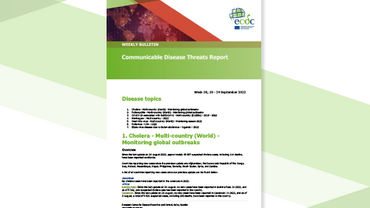External quality assessment scheme for diphtheria diagnostics, 2013
This report describes an external quality assessment in 2013 for the laboratory diagnosis of diphtheria under the European Diphtheria Surveillance Network.
Executive summary
Diphtheria is an acute infectious disease affecting the upper respiratory tract and occasionally the skin, caused by the action of diphtheria toxin produced by toxigenic Corynebacterium diphtheriae, Corynebacterium ulcerans and Corynebacterium pseudotuberculosis . Effective control of such an uncommon vaccine-preventable disease relies on prompt and early recognition and diagnosis. Diagnostic capacity is essential to prevent potential mass outbreaks, to achieve adequate vaccination coverage, and to assess the impact of control and elimination efforts. Because accurate microbiological diagnosis is crucial and complementary to clinical diagnosis, it is essential that all European countries have access to capacity for microbiological diagnosis of diphtheria caused by various potentially toxigenic strains of corynebacteria.
As part of ECDC’s efforts to build and develop microbiology laboratory networks, the European Diphtheria Surveillance Network (EDSN) has been established. Since its creation in November 2009, the EDSN (initially termed ‘DipNet’) has accurately monitored the diphtheria burden across the European Union (EU) Member States and several associated countries. The EDSN regularly performs external quality assessments (EQAs) to continuously enhance and strengthen laboratory-based surveillance capacity. EQAs are an essential tool to enable laboratories to monitor, evaluate and improve their own performance. This report describes an EQA despatch in 2013 for the laboratory diagnosis of diphtheria under the auspices of EDSN. A total of 32 countries, including Croatia as a new member of the European Union, participated in this EQA and were asked to isolate, identify and perform toxigenicity testing on any Corynebacterium spp. present in the six simulated throat specimens sent. Key findings are reported below and a description of the work involved and the outcomes of these exercises are detailed further in this report.




